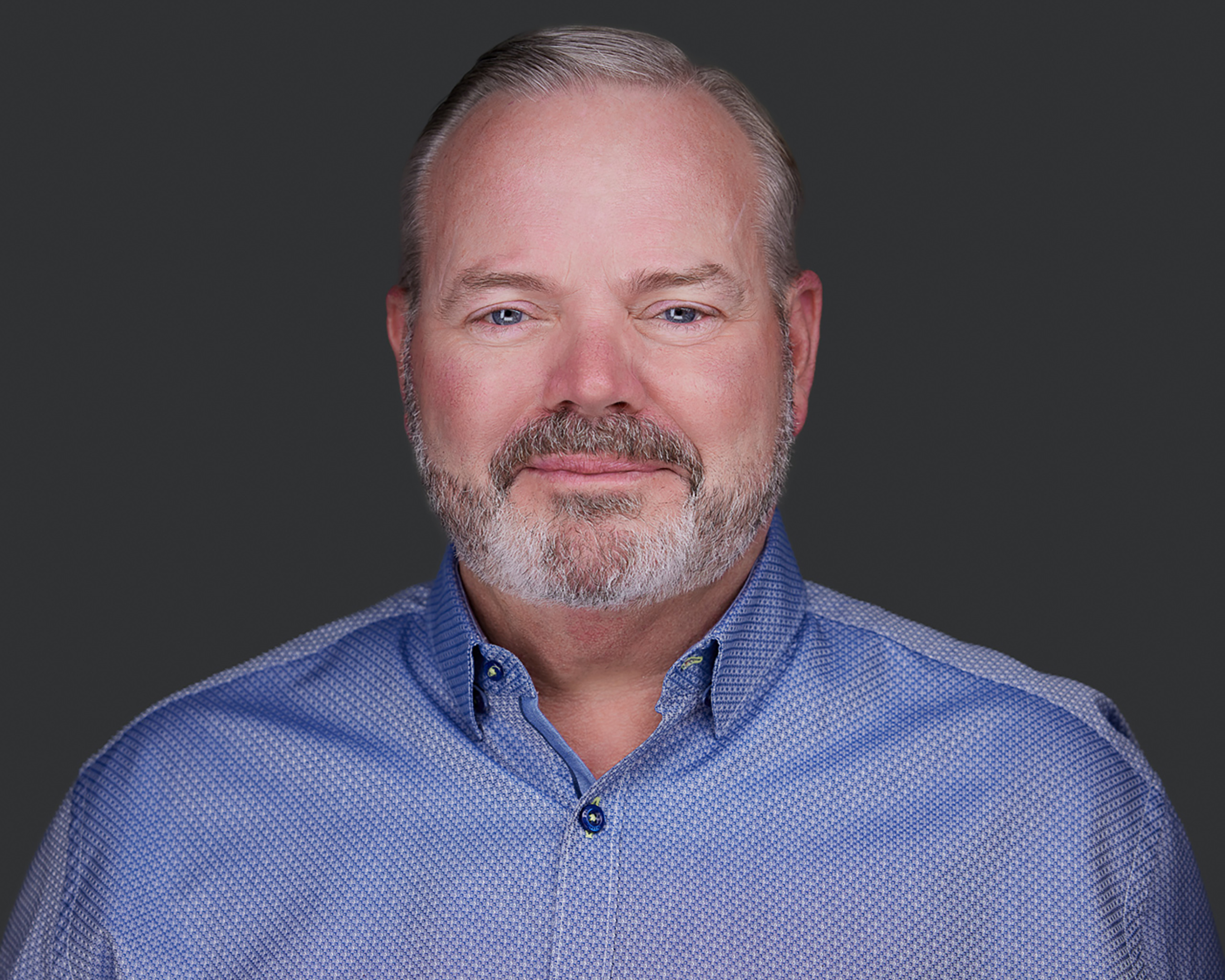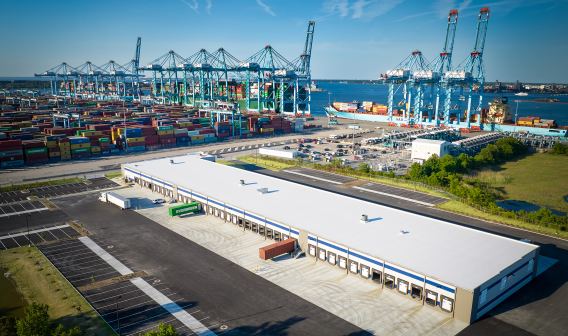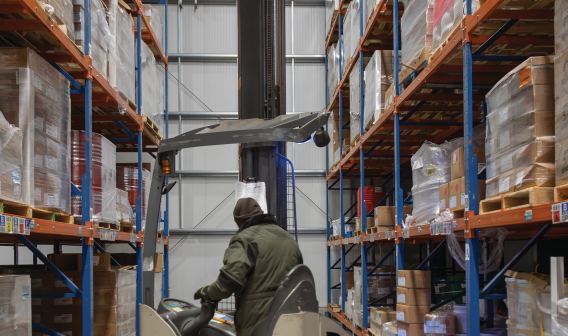So many uncontrollable and unforeseen events impact the supply chain in one form or fashion. The pandemic was one example, but you see impacts consistently based on fluctuating consumer demand, followed by fluctuating capacity levels. You’ve got volatility in the economy and labor markets, natural disasters, geopolitical events, and changes in laws, important export regulations, and tariffs. Since the pandemic, companies have been focused on creating some flexibility and sustainability in their supply chain.
Our energy and focus have really been on evolving quickly to support what we call the elastic supply chain push. The Estes enterprise has a fleet of services that can basically facilitate every link in a customer’s supply chain. So we’ve been dialing those services in, blending them together, and providing a full-service supply chain offering to our customers.
In conjunction, we’re continuing to invest in both our nonasset-based and asset-based expansion. The nonasset-based expansion allows us to increase our operating flexibility and capabilities without heavy investment in fully burdened infrastructure that’s out there. The amount of data and visibility to it is now almost more important than products’ movement.
Jehu: You called out that the pandemic exposed and highlighted some supply chain issues for customers, and globally, that maybe we weren’t aware of. Aside from that, do any other unique post-pandemic challenges come to mind that you hadn’t seen before?
Harcrow: Some cascading changes post-pandemic have become the new norm. Labor is certainly one of those things. Inflation based on the cost of transportation and the cost of space has continued to rise at a fairly quick pace. We saw during the pandemic the cost of ocean freight go higher than ever before because of the lack of capacity. And over the last year, we’ve seen it go lower than probably in 15 or 20 years.
You have push and pull between providers and shippers. Shippers who bore that cost burden during the pandemic are looking to reposition and regain some of what they lost due to pandemic rates. We’re updating ocean rates and container rates on a month-to-month basis back to our customers. When you work with customers strategically the way we do, it’s hard because they want as much of a fixed cost analysis on their supply chain as they can get. We’re seeing post-pandemic variables in the entire supply chain that really change rates, again almost month to month or quarter to quarter. One thing I see post-pandemic that is probably the new norm, at least for a period of time, is consistent fluctuation in capacity and rate.
Jehu: You touched on the value of data and information. That operation’s a bit more complex, and answers the question, “Where are my things and when am I going to get them?” and then planning labor around that. You’re also in a position to provide that information to your customers so they can make better decisions. Can you dig a little deeper into that side of the business?
Harcrow: Data integrity is extremely important. You’re trying to create visibility from the time that product hits the port to the time it either gets into the distribution center or to direct-to-consumer or a retailer. Being able to provide that visibility back to your customer allows them to make good business decisions.
Customers may allow us to be part of their ERP and get into their system and provide, once that product hits our dock, real-time visibility to the status of that product on our dock, so they can make very quick and efficient decisions. At that point, we’re almost operating like a mini-distribution center for them. That gives those customers a lot of flexibility in pushing something to the distribution center or the warehouse or taking it straight to manufacturing or straight to retail. That’s a lot of value to that stream or segment of their business.
We’re analyzing, based on milestones, what the compression time is between milestones. All these milestones we’re starting to ping and provide visibility back to our customers now allow us, as the provider, to really hone in and become precise in improving our service. If we can logically apply some standard dwell times in between those milestones, then we know immediately when we have something that’s starting to get outside of a service level agreement. That pre-alert to us of something gone awry allows us to jump in and correct it.
Jehu: Early in the conversation, you touched on AI and future-state technology and analytics. Everything you’ve just talked about is massive generation of data and the story that data lake can tell us, with the potential for a future state of an even more predictive environment to optimize and achieve more supply chain stability and balance than we ever have before. Can you talk about your innovation and investment in AI?
Harcrow: I think we have become very good at collecting data, and I think artificial intelligence will help us mine that data better. Cognitive computing will allow us to take mined data and really identify where true trends are. AI should help us identify those things and make them standard parts of our process improvement.
We as an organization, like a lot of organizations, still struggle with how AI is effectively applied to the data or analysis done now. As we run data through our business intelligence tools, how do we apply that final leg of artificial intelligence to become cognitive in our processes and improve them over time?
Jehu: What comes to mind is the disparity between the milestones’ meaning and collection of the data, and the other parties you interact with and what those milestones mean to them, versus what they mean to you and in your operating system. How to get all that into one standard language so data received means the same thing to all parties. Would you agree that’s a massive challenge for the industry? What can we do about it?
Harcrow: It is a massive challenge, and what we’re talking about is just transportation nuts and bolts. You also have the customer experience side of your business that AI needs to continue to evolve and play a significant part in, because customer feedback can tell you where your operational models have gaps and where they’re not engineered properly. If you can capture feedback and mine it effectively, it can tee up corrective action that AI can immediately apply in that environment.
It’s a lot more complex getting everybody together and on the same page as to how this information we’re going to gain, and AI, will apply corrective action to that information across a fragmented logistics and transportation industry and environment.
Jehu: The point you made about customer service feedback, and being able to mine that information in real time, is obvious. How do you get meaningful information? How are you harnessing client feedback to make it actionable?
Harcrow: We recognized the value of customer feedback seven years ago, and our organization made a significant investment in the net promoter system, but it could be any customer feedback-type structure. The key is your executive team. It has to be part of their DNA. They have to buy into it and cascade it down in the right way.
Jehu: Do you see an opportunity — you mentioned damage — where automation, whether it be autonomous vehicles, robotics, or other types of automation in the warehouse or at the delivery destination, could play a role in the future to further improve that experience?
Harcrow: In our space, humans are going to be around for a while. Autonomy and vehicles and equipment will continue to advance. As they do, people will learn to manage and interact with them. If we look 20, 50 years down the road, we’ll see AI and robotics play much greater roles in our lives, whether at home or work.
Autonomous vehicles are on the road today, but most people have never seen them. There are companies like Waymo, which is basically the autonomous Uber operating in places like Arizona. Until we can pull up to an intersection and regularly see autonomous cars there, we’re not likely to see autonomous tractor-trailers.
The dynamics of driving a truck are more complex, certainly in long, open, low-traffic stretches of the interstate. I think that’s where you’ll see impact begin in the trucking industry sooner than later. But I think it’s going to take a while for us to see autonomous trucks regularly moving freight.
I really applaud Estes. They’re looking at how their trailers are loaded and minimizing and mitigating damage. Estes developed and patented the dynamic loading trailer about four years ago. It looks like a web wall, with load bars basically in the trailer’s ceiling that can be pulled down and positioned every six inches from top to bottom. If they load an oddly shaped piece like patio furniture and don’t want anything to stack on top of it, they can lower those load bars to that level, lock them in, and then load above the bars, gaining the efficiency of filling that trailer up without jeopardizing or crushing anything. Innovations like that will really improve damage ratios.





